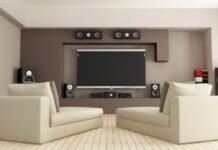For those newly moved into a home of their own, indoor lighting is a different beast. The lighting you are exposed to can affect your home’s productivity and overall ambiance. The kind of pieces you have are your key – and learning how to maximize them for your personal space. Do also consider that your electronics may have to move around the space of your home.


Lighting Terms
For the indoors, your space is the biggest factor in how your lighting can play out. There are specific lights that can fit a specific type of space, and for some, this proves to be a Herculean task because some can go out of your current budget.
However, there’s always a find for your needs with a broad market in the electronics industry. One such brand that offers well-rounded offerings is Royu lights.
The lighting terms you have to get to know and understand are the following:
- Ambient lighting – This refers to the series of lights that provide general lighting to a space. Ambient lighting is characterized due to its welcoming and inviting nature and capability to provide light for mundane daily activities.
- Accent lighting – Accent lighting is also known as “directional lighting.” Accent lighting can help influence the ambiance of a room. This type of lighting utilizes a combination of lights to highlight different features in a room.
- Minimalist lighting – Simplicity and subtlety are the key components needed for minimalist lighting. Decoration for minimalist lighting is kept to a minimum.
- Color temperature – This pertains to the intensity and color of a light bulb.
- Natural lighting – Natural lighting refers to the kind of lighting that comes from a natural light source. Natural lighting can alter the ambiance of a room. Natural light can accentuate reflective objects and surfaces like glass tiles, mirrors, and glossed woods.
- Task lighting – Task lighting ensures that the light can support daily activities. Adjustable flare and shadow-free lights are used for different purposes and activities.
Planning your lighting
Before getting started, look into the function of your room/s. These are the questions you need to answer:
- What is the use of this room?
- How does my current lighting setup work?
- Where are the plug sockets located?
You also need to consider your current budget for lighting. Can you afford to set up new lights? Can you buy new lighting furniture?
Kitchen Lighting
The kitchen is one of the busiest rooms in the home. You cook and clean in this room. For the sinks, ensure they have a solid light source so you can see the utensil and plate you are holding when you wash the dishes.
Some suggestions to improve your kitchen include using pendant lights for the sink and replacing old fluorescent lighting with energy-efficient LEDs.
Bedroom Lighting
Bedroom lighting is one of the hardest to get right regarding lighting. While you may want a homey ambiance, you will need good lighting, especially if you have a desk for school or work.
Avoid using candles. Rather, focus on using natural light in the morning. If you are into the LED gamer aesthetic, you can utilize LEDs to transform your desk. Don’t forget to check where your light switch is located as well.
Bathroom Lighting
With the bathroom, you need strong lighting. You can update the established lighting to give your room a more frosted glow. If you cannot update your bathroom light, you can use battery-operated color-changing LED spheres on shelving to make the room brighter.
Conclusion
Lighting is crucial to creating a great environment for you and your family. Due to the importance of lighting in a space, it is well worth asking for expert advice on how you can manage indoor lighting.
















